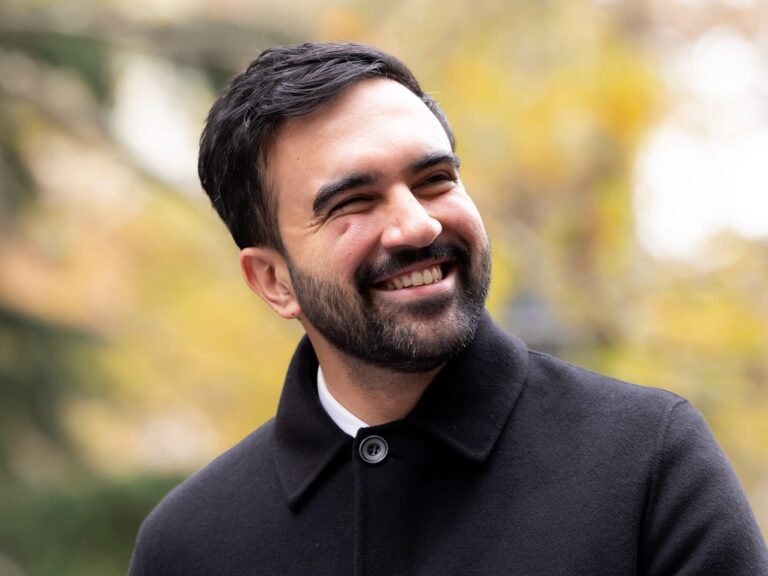

Image licensed via Adobe Stock
Straight from the horse’s mouth, these are the portfolio strategies that will actually land you jobs and win you clients.
Stressed about finding work? Then forget social media and focus on your portfolio. Because while many creatives just slap something together and think that’s fine, it really isn’t.
A portfolio isn’t just a collection of work—it’s the story of why you’re great and why people should take you seriously. So it really can’t be rushed.
But what will really help your portfolio stand out from the crowd? To find out, we spoke to designers, creative directors and recruiters who review hundreds each year.
We’ve gathered their best insights in this article, while to read the full conversation, head to LinkedIn and our own community network, The Studio (not signed up yet? Don’t worry: it’s quick and free to do so).
Tell a story
Let’s start with the misnomer that a great portfolio is all about polished, eye-candy visuals. It’s not. It’s the story it tells that’s the crucial thing.
As Iain Worgan, brand development specialist and co-founder of In-Col Studio, says: “I want to understand the thinking behind the work just as much as the output. Tell me what the brief was. What was the real challenge? How did you approach it? If you can do that well, I already know you can present to a client, back up your thinking in a room, and collaborate with a team.”
Matthew Gallagher, designer and artist at Designomatt, offers similar advice. “Tell a story about you, your craft, and progression in your career overall, with the items presented,” he urges. “While each piece, or case study, should speak to the problem, the solution, its impact, and most importantly, your role.”
Show your working
Instagram, in general, is all about the beautifully polished end product. But don’t take that same approach with portfolios. Because what people really want to see there is the messy, human side of creativity.
As UX designer Becky Colley says: “I love to see what someone learned along the way. No project runs smoothly; there’s always something you could’ve done differently. If someone shows their reflections, it tells me they’re willing to admit when they can do better.”
Antonio Serrano, creative director at [BAMF] Spain, echoes this feeling. “I love to see the process behind the result: sketches, failed ideas, how the end result started and how it was shaped to what was presented,” he enthuses. “Polished images based on purely aesthetic mockups can get you so far, and they’re becoming ubiquitous.”
And Matt Nudds, creative recruiter at Factory, adds: “[Even] coffee-stained sketches are important if they’re important to the strategy or idea.”
Quality over quantity
We all have a strong emotional attachment to the things we produce. So the instinct to showcase everything can be overwhelming. But restraint is crucial. As graphic designer and illustrator Nvard Yerkanian puts it: “Your portfolio isn’t meant to be an archive. It should be a curated selection that reflects the kind of work you want to attract. It’s far more impactful to present five strong, cohesive projects you’re proud of than 20 scattered ones that dilute your identity.”
Ali Martín Carrillo Filsoof, founder and creative director at Design Dept, reinforces this idea. “Show fewer, stronger projects,” he urges. “Narrate your role with humility and precision. Let the work breathe and allow your personality, values, and lived experiences to shine through.”
And creative director Juan Carlos Morales warns against the “everything for everyone” approach. “[As a reviewer], I don’t need to see that you’ve dabbled in everything under the sun,” he notes. “So, unless it’s a truly differentiating skill, leave out those couple of illustrations or photos or fine art that don’t stack up to your graphic design work.”
Context is everything
How you present your work, of course, matters as much as the work itself. Nvard emphasises the importance of providing real-world context. “That means high-quality mockups, real-world documentation, or even usage snapshots when possible,” she says. “It helps potential clients or employers see how your work lives beyond your portfolio.”
Tony Clarkson, graphic designer at And Something Studio, adds a practical warning. “If you’re going to use mockups, make sure they’re relevant to the project,” he cautions. “For example, don’t make a cool image of a poster fly-posted to a wall if nothing is going to be fly-posted to a wall.”
That might sound obvious, but I’ve personally seen plenty of examples where that advice isn’t followed, and it’ll make your portfolio stand out like a sore thumb.
Target your audience
Following on from that last point, it’s worth remembering that generic portfolios get generic responses. As Stefan Smit, illustrator at Made by STFN, says: “Ideally, your portfolio should be tailored to the clients that you would like to connect with. That way it will immediately resonate with them.”
Charlie Haywood, founder and creative director at Hotfoot Design, expands on this point. “For me, it’s someone who has done the research into our business,” he explains. “They know what we do and who our clients are, the type of work we create, and tailor their response and portfolio around that, to make it relevant and personal.”
For illustrators specifically, Bianca Bramham, managing agent at The Jacky Winter Group, highlights the importance of variety. As she explains: “If your folio only shows plants and animals, a sports client probably won’t trust that you can deliver for their brand without seeing sports-related imagery in your folio.”
Get the technical details right
The presentation mechanics are also something that can make or break a portfolio. Stew Calladine, graphic designer at Stewart and Design, emphasises accessibility. “Make it easy to navigate!” he urges. “Often, CVs go to hiring/talent managers first. They may not necessarily have an understanding of design principles. So you must make it easy for them to flick through and get.”
For this reason, he’s a strong believer in creating a PDF version of your portfolio. “I know it may sound dated, but they are super simple to navigate,” he explains. “Adding a contents page and hyperlinks to pages really helps navigation.”
Oli Furze, design director at Dawn Creative, adds that you need to pay attention to the smallest details. “A big red flag for me from designers is a badly typeset CV,” he explains. “Every single bit of communication is a chance to impress. A poorly laid out Word document using Calibri might mean I don’t even make it as far as the portfolio, unfortunately.”
The important point is that portfolio reviewers don’t have all day to look at your submission: they may only have a few seconds. So for Iain, the answer to the question ‘What puts you off?’ is simple: “Literally any barrier to seeing the work. Passwords, massive PDFs, click-through links from a CV, and overly designed documents. Anything that delays me getting to the actual thinking or visuals makes me lose interest fast.”
Convey your personality
Ultimately, when someone reviews your portfolio, they’re looking at how you think, not just what you can make look good. Take Michelle Bower, associate strategy and transformation director at Dalziel & Pow: “When I’ve conducted mid-term reviews or post-grad reviews, I’m mostly looking for the individual who can bring something to a team,” she says. “Cultural fit maybe; cultural add definitely. What do you care about? What makes you tick and how do you think?”
So while technical skill and aesthetic judgment remain crucial, the portfolios that truly stand out are those that reveal the person behind the pixels. They tell stories, show process, demonstrate thinking, and most importantly, give viewers confidence that this is someone they’d want to work with.
In that light, a portfolio is not really about making things look good. It’s about showcasing your ability to think well, communicate clearly, and solve problems creatively. That’s the key to setting your portfolio apart from the ones that are, well, “just pretty”.


